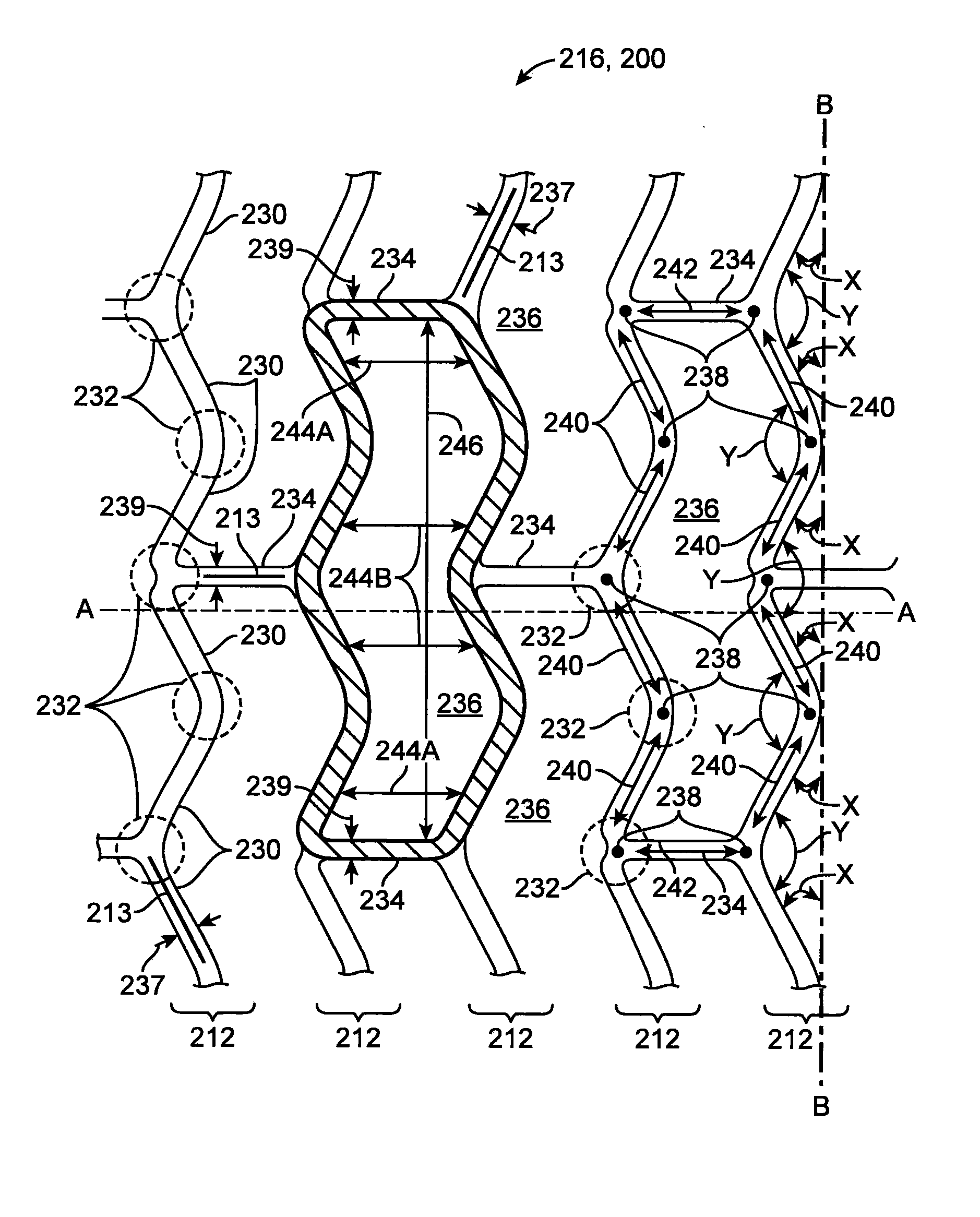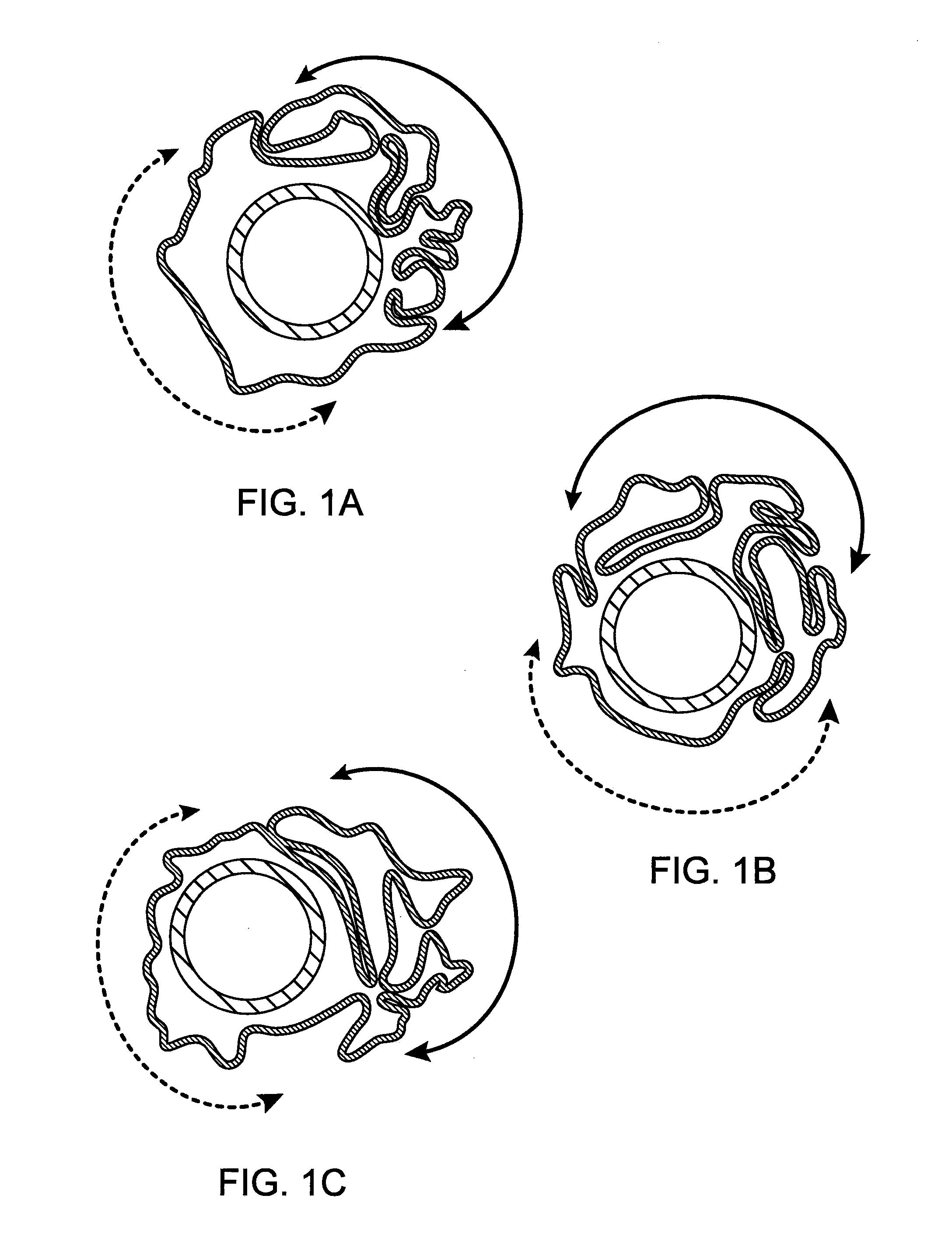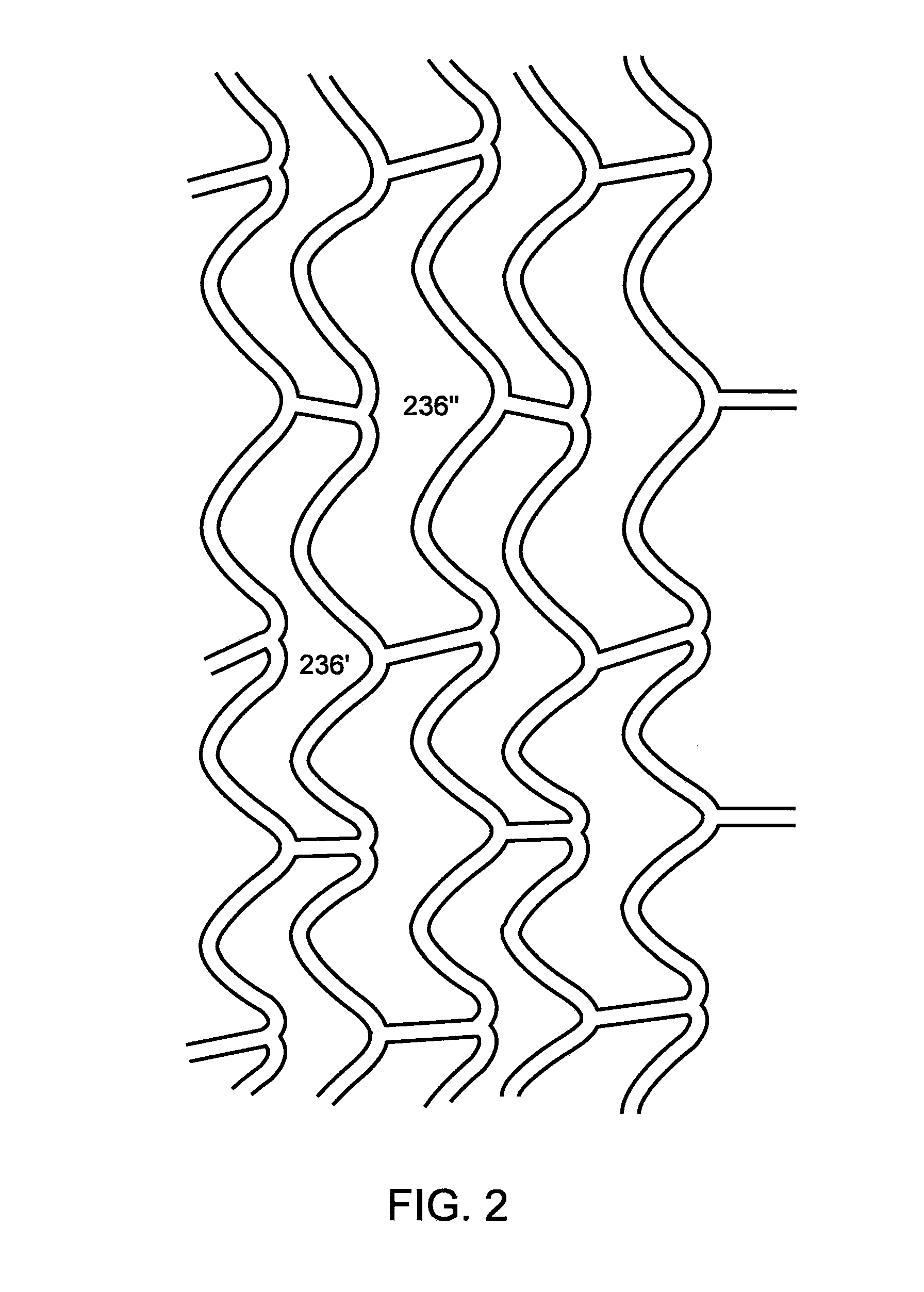Method of Uniform Crimping and Expansion of Medical Devices
a technology of medical devices and uniform crimping, applied in the field of medical devices, can solve the problems of ring struts and/or cell structures, unable to consistently expand in a uniform manner, early crimping processes, etc., to avoid the potential formation of broken struts, improve balloon folding, and increase the uniformity of polymer scaffold expansion
- Summary
- Abstract
- Description
- Claims
- Application Information
AI Technical Summary
Benefits of technology
Problems solved by technology
Method used
Image
Examples
example 1
[0072]FIGS. 3A-3B illustrate steps associated with a first crimping process according to the disclosure. In this example there is a crimping process described for crimping a 3.5 mm scaffold to a 3.0 mm semi-compliant PEBAX balloon. FIG. 3B illustrates in graphical form the crimping portion of the FIG. 3A flow—a graph of scaffold diameter verses time with a balloon pressure of between about 20-70 psi (or 1 atm up to the fully or over-inflated balloon pressure) applied throughout substantially all of the crimping process. For example, the balloon pressure is maintained at 70 psi for steps A-G, then the pressure is allowed to decrease (or deflated) to 50 psi (or 1 atm) for the period G-H. Balloon pressure is removed at point H. No balloon pressure is used H-J for purposes of achieving a low crossing profile and avoiding damage to the balloon.
[0073]FIG. 3A (as well as FIG. 4A, discussed infra) indicate three possibilities for crimping, depending on need. First, there are two balloons us...
example 2
[0095]FIGS. 4A-4B illustrate the steps associated with another example of a crimping process according to the preferred embodiments. FIG. 4B illustrates in graphical form the crimping portion of the FIG. 4A flow—a graph of scaffold diameter verses time. As with the previous example, a balloon pressure of between about 20-70 psi is applied throughout substantially all of the crimping process. In this case, balloon pressure is maintained until the scaffold diameter has reached about 50% of its original diameter. Additionally, in this example, following the final alignment check the iris diameter is continuously reduced at a slow rate until reaching the final crimping diameter, and then continuous reduced further after balloon pressure is relieved. Otherwise this process is essentially the same as in Example 1.
[0096]According to the disclosure the balloon is fully or over inflated before the scaffold diameter is reduced within the crimper, or after a partial crimping and final alignmen...
PUM
| Property | Measurement | Unit |
|---|---|---|
| pressure | aaaaa | aaaaa |
| crimping temperature | aaaaa | aaaaa |
| temperatures | aaaaa | aaaaa |
Abstract
Description
Claims
Application Information
 Login to View More
Login to View More - R&D
- Intellectual Property
- Life Sciences
- Materials
- Tech Scout
- Unparalleled Data Quality
- Higher Quality Content
- 60% Fewer Hallucinations
Browse by: Latest US Patents, China's latest patents, Technical Efficacy Thesaurus, Application Domain, Technology Topic, Popular Technical Reports.
© 2025 PatSnap. All rights reserved.Legal|Privacy policy|Modern Slavery Act Transparency Statement|Sitemap|About US| Contact US: help@patsnap.com



